Super Romantic 10-14 Day Japan Honeymoon Itinerary
You’re planning a Japan honeymoon? Congratulations on this incredibly exciting time in your life! A honeymoon is even more thrilling than the wedding itself, in my opinion. And as one of the most important trips of a lifetime, I understand the pressure to get it just right for you.
What do you get when you combine someone who lives and breathes to help others plan unforgettable trips with a self-confessed and passionate Japanophile? You get me!
Through my various visits over the past decade, my 2 week and 3 week Japan itineraries have already helped millions like you become invisible tourists to enrich their trips. And this Japan honeymoon itinerary is no different!

While there are many suggestions out there for planning a honeymoon in Japan, very few have been written by experts who visit the country regularly or share insider knowledge on their Japan travel blog. Why use the same cookie-cutter itinerary as everyone else when a truly unique experience is just as easily within reach?
Sure, the main tourist draw cards such as Tokyo and Kyoto are popular for many reasons, and rightfully so. But I’m about to share a different side to these places to personalise them for you and some other locations you may not have considered for your honeymoon, but absolutely should.
As with all my Japan travel guides, I’ll be sharing my recommendations for things to do, where to stay, things to do in each, cultural etiquette and exclusive tips learnt from my personal experiences over multiple visits.
If you’re looking to create a Japan honeymoon itinerary that helps you blend in by avoiding crowds while simultaneously exploring the cultural, historical and beautifully romantic side of the country in 10-14 days, read on for more!
This post contains affiliate links, I may earn a small commission if you click through and make a purchase.
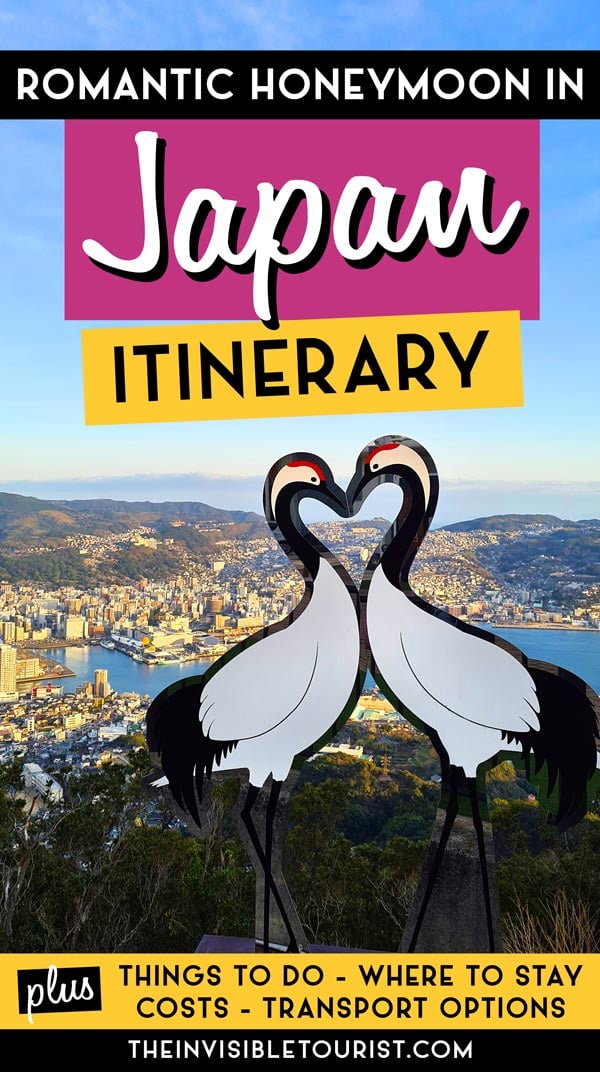
Things to consider when planning a trip to Japan for honeymoons
Below is a map of places we’ll cover on this Japan honeymoon. But before jumping into the itinerary, I’m going to share a few useful things you should consider before planning your trip. Feel free to skip down to the itinerary here.
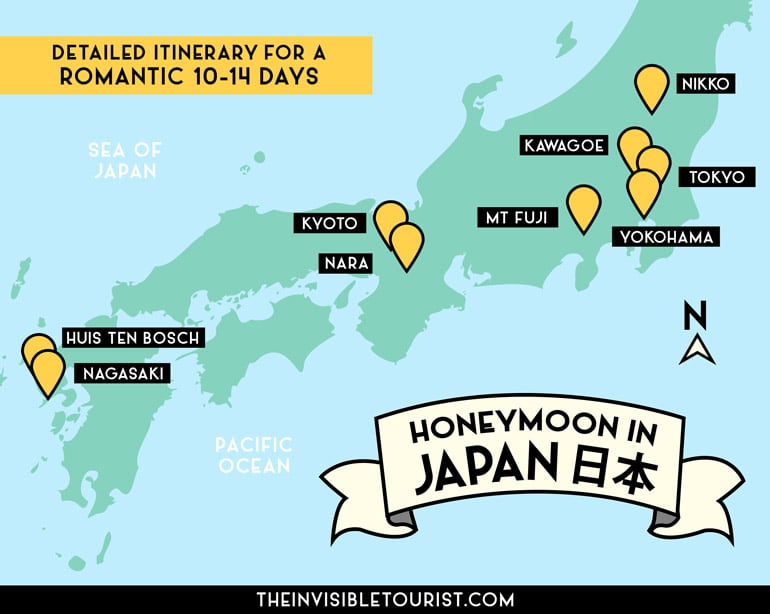
My massive guide on how to plan a trip to Japan covers 20+ travel tips you need to know before visiting, but I have summed up a few here.
Did you know one of the many things Japan is famous for is celebrating each distinct season? The Japan honeymoon places in my itinerary are suitable year-round. Perhaps you’ve already set the date for your wedding and know the season you’ll be travelling, but if not there are a few things to note:
- Winter in Japan
Christmas and New Years attract huge crowds in the major cities, but after the first week of January is a fabulous time to visit as tourists head back abroad. Snow can be experienced in many places, even if you don’t plan to ski!TIP: My guide to experiencing Japan in winter shares advice for things you may not have thought of.
- Spring in Japan
With cherry blossom season spreading throughout the county, spring is THE most popular and crowded time to visit Japan. Book accommodation at least 3-6 months in advance to avoid disappointment.
TIP: My guide to spring in Japan shares the perks of visiting just before and after the main blossoms and tips for avoiding crowds.
- Summer in Japan
One of my personal favourite times to go! Yes it can get hot and humid but other tourists tend to avoid summer like the plague, which can benefit you. Natural scenery is lush and colourful, and Mt Fuji climbing season is open.
TIP: Read my guide for the things no one tells you about visiting Japan in summer.
- Autumn in Japan
The red, orange and yellow hues of foliage in Japan and mild temperature makes autumn the second most popular time to visit. Book accommodation well in advance and be sure to add some autumn-y spots to your itinerary.
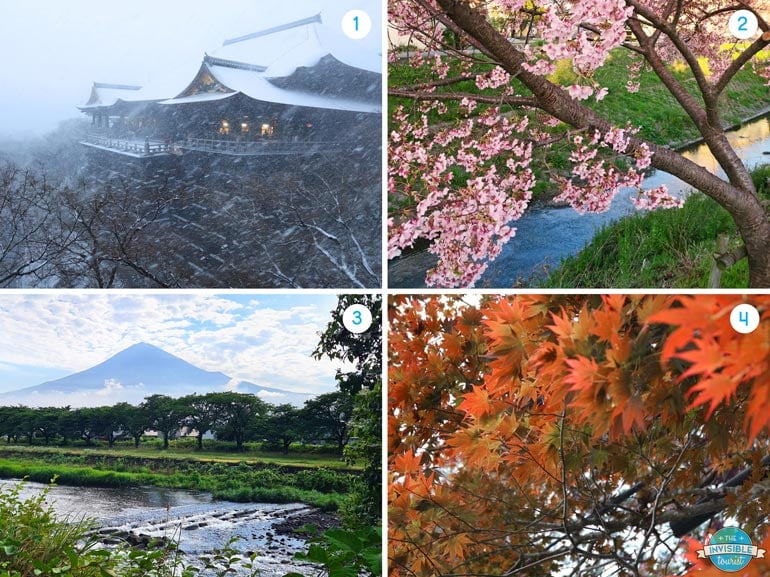
Flights to Japan
Of course there are more than these, but the main airports most international visitors to fly into and out of Japan are:
- HND: Tokyo Haneda International Airport, closest to central Tokyo
- NRT: Narita Airport, about an hour outside of Tokyo
- KIX: Kansai International Airport, 30mins from central Osaka
- FUK: Fukuoka International Airport, in Kyushu (more likely if flying to/from South Korea).
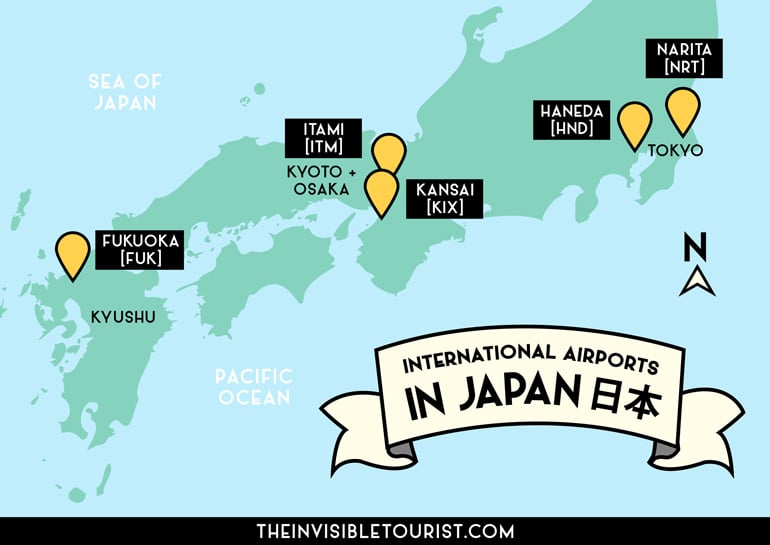
TIP: My recommendation for Tokyo is Haneda Airport if your budget allows, as it’s only 25 minutes to the Tokyo Station area. Alternatively, Tokyo Station can be reached in about an hour from Narita International Airport via the Narita Express train (NEX), or Ueno Station in 35 mins on the Keisei Skyliner.
Transport in Japan: Do you need the Japan Rail Pass?
Now for the age-old question: Do you really need a Japan Rail Pass (JR Pass)? Transportation in Japan can often sound confusing, but it doesn’t have to be. Buying the pass or not is a highly debated topic in travel planning forums so to put it simply: It comes down to personal values. You can save time or money in Japan, usually not both.
The shinkansen (bullet train) is operated by Japan Rail (JR), but this is only one of many train lines. There are also multiple private companies that operate their own train lines, such as Tokyo Metro, Osaka Metro, Kyoto Subway, Tobu, Odakyu, Keikyu, Seibu and more.
Many visitors blindly buy the JR Pass without calculating whether their planned journeys will justify the cost. Don’t let that be you!
TIP: A rechargeable Suica Card is the best option for short journeys as it can be used on most forms of transport.
If I’m being honest, the cost of the JR Pass does not pay off for the itinerary I’m about to share below so individual tickets would save you money, but if you’re adding some extra places to my suggestions, please use this Japan Rail Pass Calculator to check.
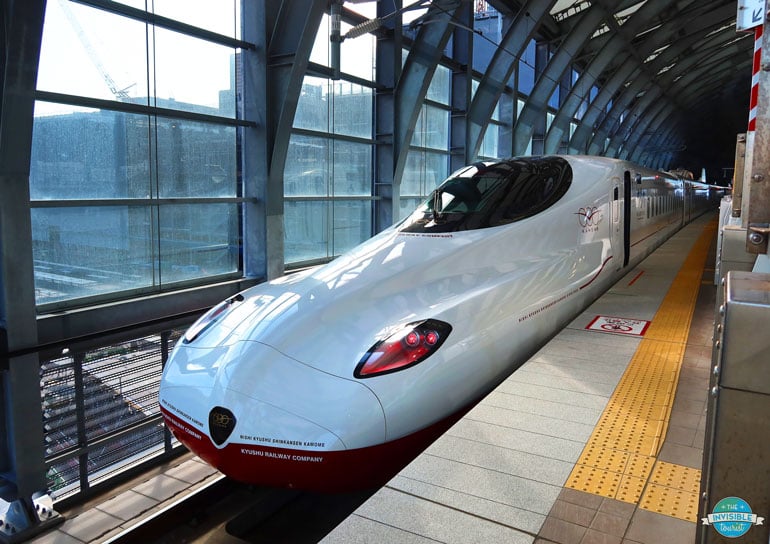
Here are some pro’s and con’s of the JR Pass:
Pros of the Japan Rail Pass
- Unlimited travel on JR transport (JR operated trains, buses and ferries)
- Can now use it through turnstiles at train stations rather than seeing station staff to allow passage
- Bullet train journeys are covered
- Can save you money if taking multiple long journeys.
Cons of the Japan Rail Pass
- Can’t be used on the fastest shinkansen, Nozomi のぞみ and Mizuho みずほ trains
- Can’t be replaced or refunded if lost
- Doesn’t cover all transport in Japan, only JR transport as mentioned above
- Using only JR transport to get around may mean sacrificing time and the pass becomes the focus of journeys.
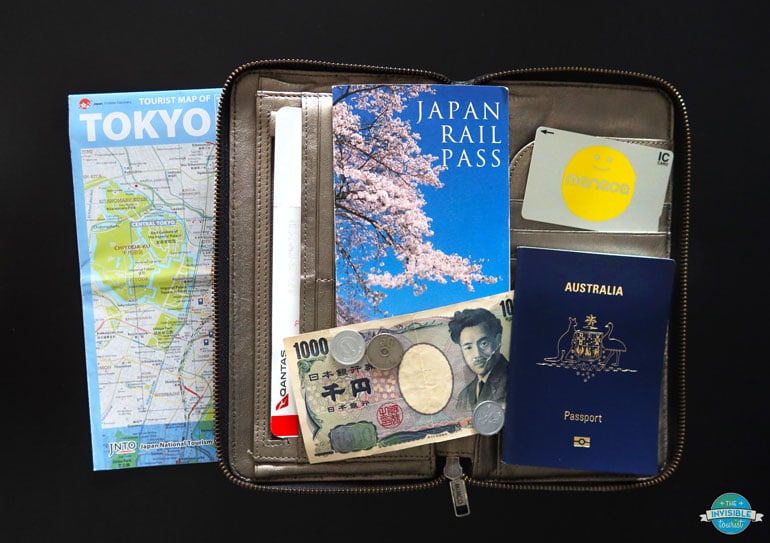
Super Romantic 10-14 Day Japan Honeymoon Itinerary
DAY 0: ARRIVE IN TOKYO
Welcome to Japan! Depending on where you’ve flown in from, you may experience jet lag due to the time difference. Let this be a chilled day where you can take your time navigating to your hotel and get your bearings. Tomorrow we begin!
DAYS 1-2: TOKYO
Tokyo is the largest metropolis on Earth, feeling like multiple cities within one larger one. You could spend a lifetime here and not see everything, as Japan’s capital is constantly changing.


Things to do in Tokyo
No itinerary for Tokyo is ever the same – there is so much to see and do! Have a think about the kinds of things that most interest you as a couple and tailor your visit around them: Do you like temples and shrines, anime, foodie culture, traditional experiences?
Having visited Tokyo many times now, my Tokyo itinerary covers plenty of places for first-time visitors but I know you won’t be able to see them all this time (a good excuse to head back, right?). My top two must-sees in Tokyo for you are are Senso-ji and Shibuya Sky, and then a day trip outside of the city.
Senso-ji Temple
Start your morning off by heading to Senso-ji Temple in Asakusa. It’s the oldest and most beloved temple in the city, founded in 645 AD. Enter through the Kaminarimon Gate (don’t forget to look beneath the lantern!).
Walk up Nakamise-dori street with its stalls traditional souvenirs and street foods. This will become quite crowded from mid-morning, so earlier is better.
TIP: If time permits, head back during the night for a peaceful and romantic experience without crowds.

Shibuya Sky
Marvel at Tokyo from above at one of the city’s newest and most popular attractions, Shibuya Sky. The most romantic time to visit is as the sun goes down! Check the sunset time and visit 1.5–2 hours ahead of this to watch Japan’s capital transform from day to night. You may even see Mt Fuji from here if there are no clouds!
TIP: My guide to Shibuya Sky tickets and tips covers mistakes I made during my first visit and how you can avoid them.
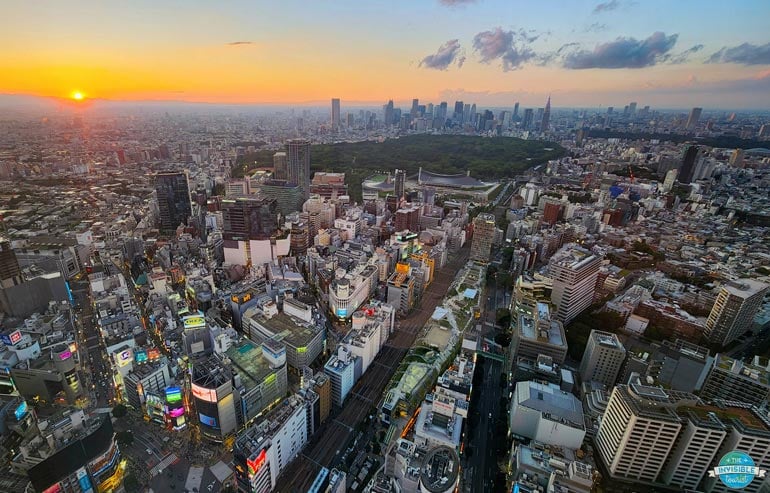
More ideas for things to do in Tokyo
My Tokyo neighbourhoods guide covers many attractions you can find in each area. I’ve also covered the most iconic streets in Tokyo you may wish to add to your list! If you’re planning to spend a few days in Tokyo at the beginning and end of your trip, here’s a summary of what each area is known for to help you choose:
- Shibuya: Shibuya Crossing, Hachiko Statue, clothing and accessories shopping at Shibuya 109, Miyashita Park eateries, Nonbei Yokocho laneway for Showa-Era eateries and bars; Love Hotel Hill. Meiji-jingu is the city’s most popular Shinto shrine and lies within dense greenery.
TIP: My detailed guide to things to do in Shibuya has you covered for day and night!
- Asakusa & Sumida: 8th floor of the Tourist Information Centre has a free rooftop observatory looking over Senso-ji, Tokyo SkyTree (book tickets here), Asahi Beer Hall and the “Golden Turd.” You can also visit the hundreds of shops and observatory at the top of the SkyTree.
- Harajuku: Touristy Takeshita Street features cutesy and alternative kawaii fashion, photo-worthy crepes and rainbow street foods. I don’t really recommend this anymore due to crowds, so head to Sugamo “Grandmas’s Harajuku” or Shibamata instead for old-world charm and a more local feel.
- Akihabara: Popular with anime fans for merch, figurines, and maid cafes (don’t miss nearby Kanda Shrine, featured in two anime series!) Nakano Broadway is also popular for anime merch (but know your prices, as I saw Pokemon plushies being sold for double the price of the Pokemon Store). Super Potato sells retro games from your childhood.
- Koenji & Shimokitazawa: Trendy neighbourhoods for indie fashion, pre-loved clothing and accessories.
- Shinjuku: Kabukicho area is popular for nightlife and clubbing; Godzilla staring down from above; Shinjuku Gyoen National Garden for cherry blossoms in spring; Omoide Yokocho a smoky, narrow laneway of eateries (known as Piss Alley). Also great for electronics department stores.
- Ueno: Cheap souvenirs and street foods at Ameya Yokocho outdoor market. Ueno Park features a huge pond with swan paddle boats. Don’t miss Toshogu Shrine and Kiyomizu Kannon-do with its circular Moon Pine. Nearby Kappabashi is a dream for kitchen utensil lovers.
- Odaiba & Toyosu: Rainbow Bridge illuminated at night; Statue of Liberty, Unicorn Gundam Robot, teamLab Planets (buy advance tickets here up to 8 weeks in advance); Tsukiji Fish Market (book a guided food tour here).
- Minato: Tokyo Tower and its Observation Deck (book tickets here), Hamarikyu Gardens and tea house, beautiful Zojo-ji temple. Nearby Shimbashi bursts into life at night.
- Tokyo Station Area: Tokyo Station is like a city within itself, with so many stores and eateries! Nearby Nihombashi features a plaque marking the old centre of Edo (Tokyo’s former name until 1868).
- Ginza: Huge shopping neighbourhood of Japanese department stores and international brands. Its main street becomes pedestrian-only on Sundays.
- Setagaya: Home to the “lucky cat” temple Gotoku-ji, Totoro desserts at Shirohige Cream Puff Factory and Hanegi Park – perfect for plum blossom viewing from mid-February to early March.
TIP: More about Gotoku-ji and Shirohige Cream Puff Factory in my guide to Tokyo’s hidden gems.
- Yanaka Ginza: Preserved Edo Period neighbourhood with traditional buildings, stores and street food. My guide to Old Town Tokyo: Yanaka Ginza has your experiences here covered, and it’s also a romantic spot with locals to visit as the sun sets!
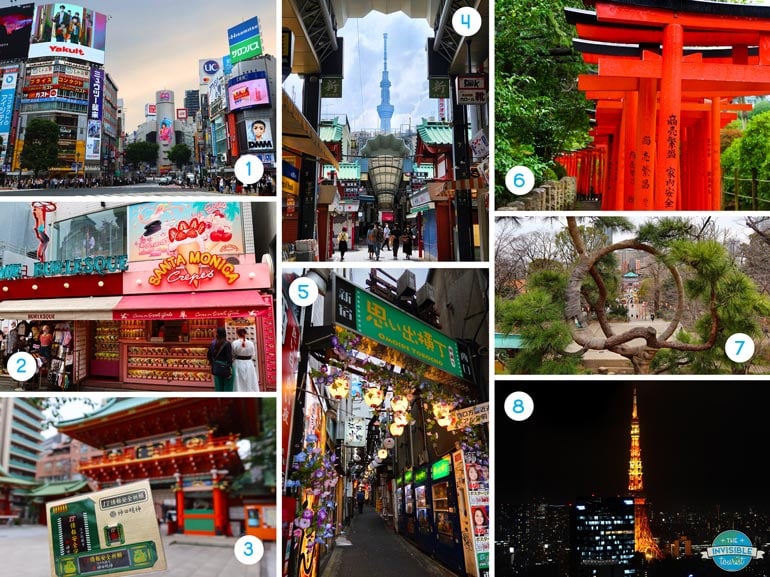
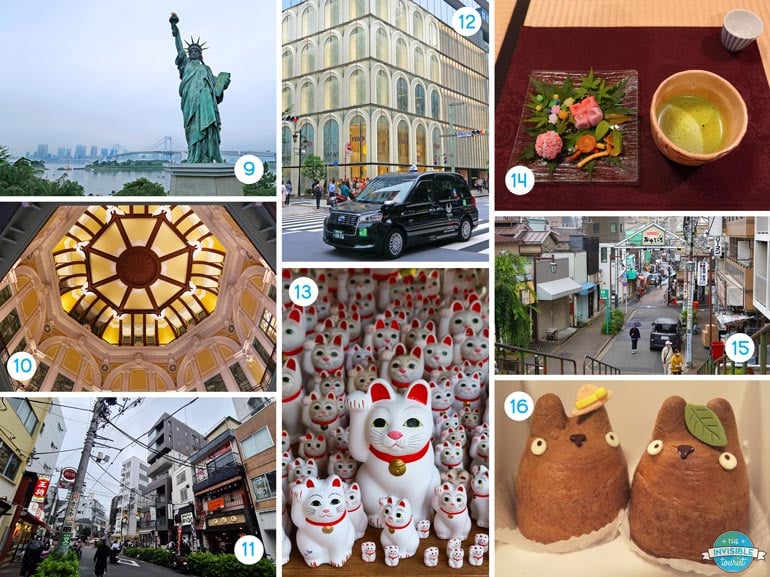
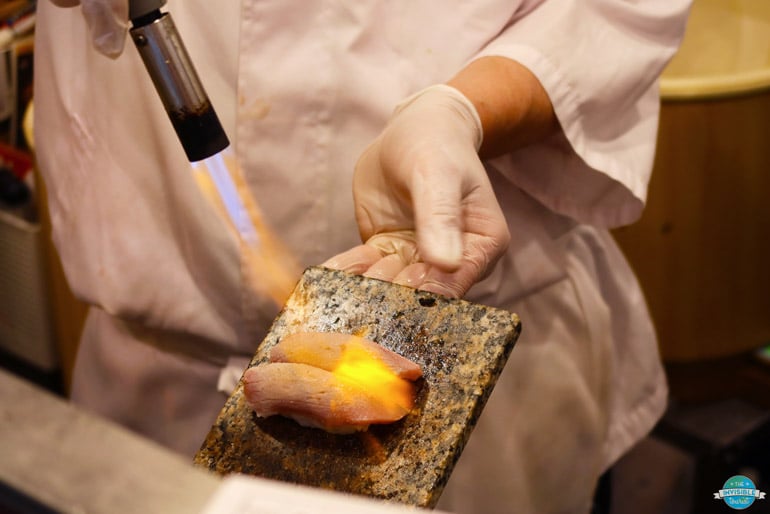
DAY 3: OPTIONS FOR A DAY TRIP FROM TOKYO
There are so many different kinds of day trip experiences to be had from Tokyo! I’ve written a detailed guide to the day trips from Tokyo you haven’t thought of, but aside from Mount Fuji (which you’ll be able to stay overnight later in this itinerary), my three personal favourites are:
- Yokohama, 30 mins from Tokyo: A fun and romantic day out! Eat your way around Japan’s largest Chinatown, stroll along the harbour front, enjoy beautiful hilltop gardens, watch the illuminations of Minato Mirai light up the evening. Don’t miss the popular Cup Noodle Museum, worth the trip in itself!
TIP: My guide for things to do in Yokohama during the day and night has the details covered.
- Kawagoe, 45mins from Tokyo: Known as “Little Edo,” preserved old town is known for street foods, Penny Candy Alley, many small temples and shrines, the best known is Kawagoe Hikawa Shrine, absolutely stunning at sundown. Shingashi Riverbed is lined with cherry blossoms in the spring.
TIP: My guide to a Kawagoe day trip itinerary has all the details.
- Nikko, 2 hours from Tokyo: UNESCO World Heritage town nestled within a forest featuring intricately decorated shrines and temples dedicated to Tokugawa Ieyasu, one of the great unifiers of Japan. Popular hot spring town Kinugawa Onsen is also nearby, as are miniature world landmarks at Tobu World Square and Edo Wonderland cultural theme park.
TIP: My guide to a Nikko day trip from Tokyo has all the details, and check my guide to the best onsen in Japan if you’d like to give them a try!

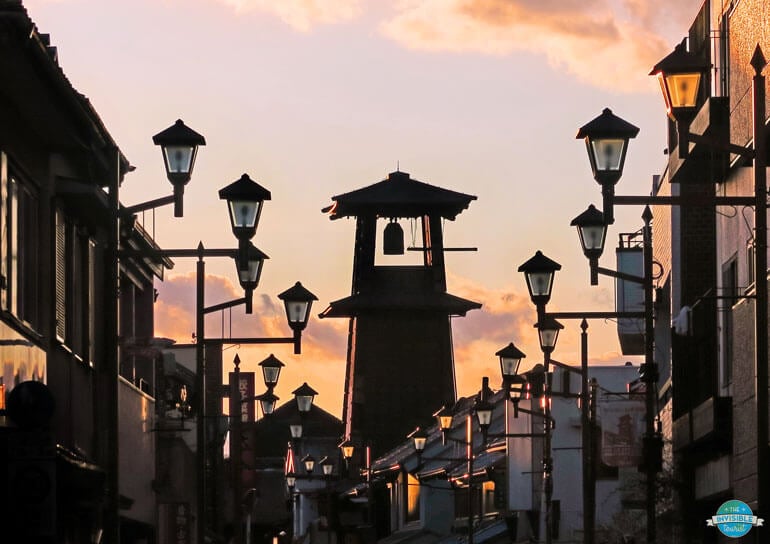
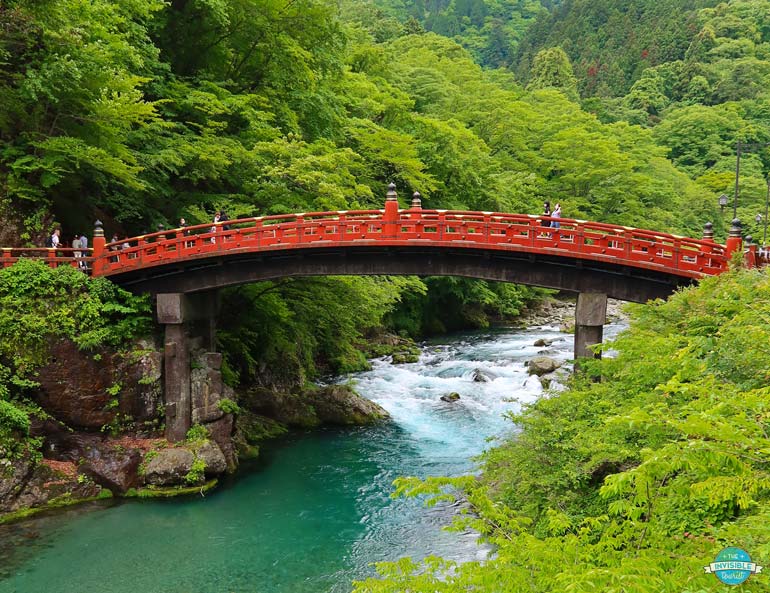
DAYS 4-6: NAGASAKI
I know Nagasaki is one of the unexpected honeymoon places in Japan that may spring to mind, but hear me out. Did you know this stunning city on the island of Kyushu has earned itself the title of a “10 Million Dollar Night View” alongside Monaco and Shanghai?
From my research, I had very high expectations for Nagasaki and they were easily exceeded. It’s honestly one of the most romantic places to visit in Japan I’ve ever been to and I highly recommend you see it for yourself!
TIP: I loved Nagasaki so much, I revisited Kyushu again later that same year. From my travels there, I created this detailed 7-10 day Kyushu itinerary if you have the extra time to spare in this region.
How to get from Tokyo to Nagasaki
Tokyo to Nagasaki by train takes around 7 hours so while you’re already near an airport in Tokyo, the fastest way is to fly. Book a one-way flight from Haneda Airport to Nagasaki’s domestic airport, as this itinerary will allow you to fly back into Kyoto (Itami Airport) afterwards. The flight is 2 hours and should cost between 8,000 – 20,000 yen per person depending on season.
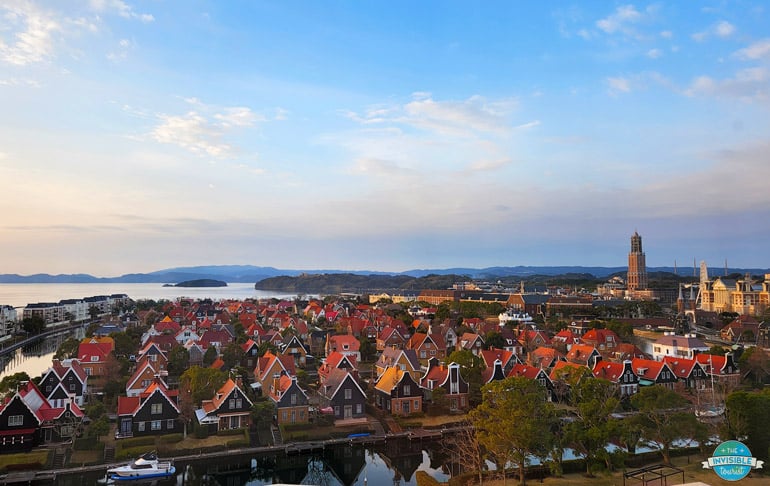
Things to do in Nagasaki
Nagasaki city shared the same fate as Hiroshima in August 1945 by becoming a recipient of an atomic bomb blast (more about this in my Hiroshima travel guide). However, the Nagasaki Peace Memorial Park is only one of dozens of things to see and do in this beautiful city.
Under Tokugawa Shogunate rule between 1638 – 1859, Japan was completely sealed off from the outside world, with the exception of the trading port at Nagasaki. You’ll see a lot of Dutch and Portuguese influence in architecture built during this time.
My top three must-sees in Nagasaki are Minamiyamatemachi, Mt Inasa, and Huis Ten Bosch.
TIP: Read my complete 2 Days in Nagasaki Itinerary: City of Million Dollar Views for further details about the following places and more!
Minamiyamatemachi
Geographically, Nagasaki is a very hilly city. Some of the most fascinating sights are from the hilltops, such as the Minamiyamatemachi area. Look out for Oura Cathedral, a UNESCO World Heritage site.
The exact locations of the best viewpoints in my opinion are called Ouratenbo Park and Aioi Jigokuzaka.
TIP: No need to pay 620 yen each to enter the Glover Garden! Head up the steep hillside staircases behind Oura Cathedral to reach vantage points with beautiful outlooks free of charge.

Mt Inasa
With its hillsides, scattered islands and panoramic views over the entire city below, Mt Inasa is one of the most romantic places in Japan.
You’ll definitely want to head up the cable car about an 1.5 hours before sunset, and perhaps even have an unforgettable dinner at the observatory’s ITADAKI restaurant!


Huis Ten Bosch
What could be more romantic than strolling illuminated canals and buildings as the sun descends?
Created to commemorate the trading relationship between Japan and Holland centuries ago, Huis Ten Bosch is a Dutch-Japanese fusion themed park where you can try different kinds of foods, enjoy beautiful gardens, windmills, rides, boutique museums and more.
During the colder months, its world-famous Winter Europe night illuminations are absolutely worth braving the chill for! Buy advance tickets here.
TIP: If you wish to visit Huis Ten Bosch, I do recommend being flexible and set aside 2 possible nights — purely because the weather can be very different from one day to the next, and you’ll want the optimal time to see this outdoor attraction. My full Huis Ten Bosch review shares plenty of tips to help plan your visit.
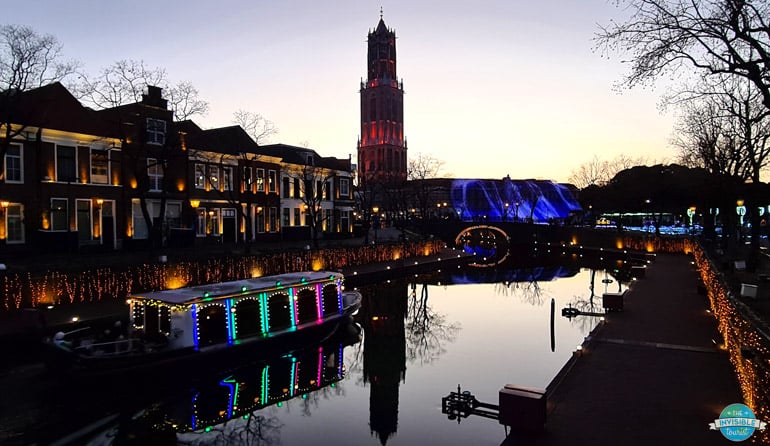

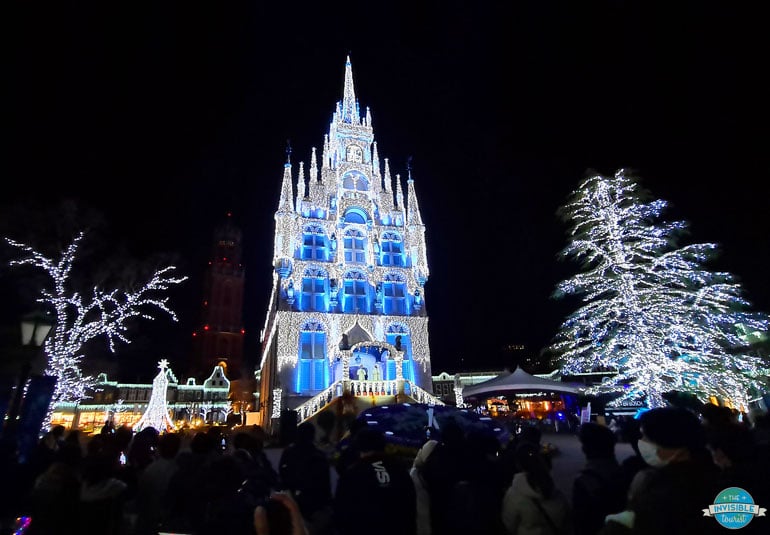
More ideas for things to do in Nagasaki
- Shinchi Chinatown – One of Japan’s top 3 Chinatowns alongside Yokohama and Kobe, perfect for indulging in street food.
- Confucius Shrine – Absolutely stunning example of Chinese settler influence on architecture in the multicultural city.
- Dejima – Man-made island port created purely for trade with the Dutch and Portuguese during the 220-year isolationist period.
- Meganebashi “Spectacles” Bridge – Survived the atomic blast during WWII. Dating back to 1634, the stone bridge takes the shape of a pair of glasses.
- Nagasaki Minami-Yamate Pudding – Popular with locals, this delicious fruit and custard treat was inspired by the stained-glass windows of nearby Oura Church.
- Sanno Shrine one-legged Torii Gate – Half of this stone torii gate remained standing after the atomic blast, and is now a reminder of the resilience of Nagasaki residents.
- Sanno Shinto Shrine Giant Camphor Trees – These trees were badly damaged by the atomic bomb blast, but went on to sprout new growth the following year and are now a source of inspiration and hope.
- Fountain of Peace, Memorial Peace Park & Peace Statue – Must-sees during your time in Nagasaki. While not as haunting as the Atomic Bomb Dome at Hiroshima, the statues in the Peace Park donated by other countries are heartwarming.
- Nagasaki Atomic Bomb Museum – Having visited Hiroshima’s, I personally couldn’t put my heart through it again in Nagasaki. But if you’re only visiting Nagasaki, I’d highly recommend visiting their museum to gain a greater understanding of what happened and the devastating capabilities of nuclear weapons that last generations.

TIP: If you have some extra time and love attention to detail, why not visit nearby Arita as a day trip from Nagasaki? With four centuries of history to uncover, Arita is prized as the birthplace of porcelain in Japan. Its main attraction is Tozan Shrine, with a unique blue and white torii gate amongst traditional Japanese architecture. Read my full Arita day trip itinerary here.
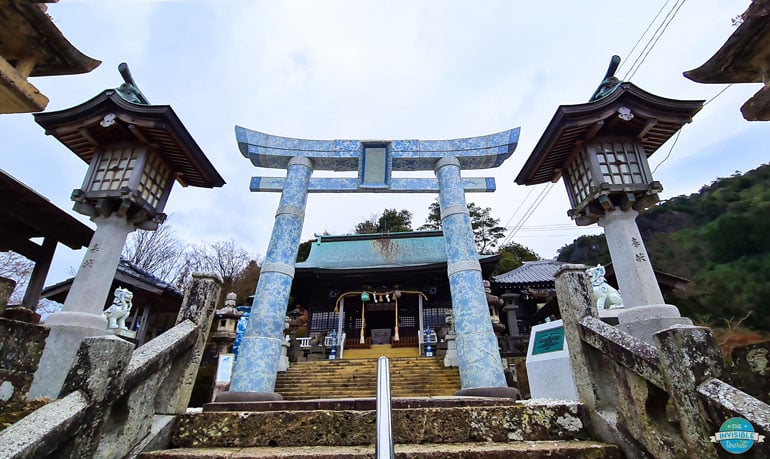
DAYS 7-9: KYOTO
As Japan’s ancient capital for over 1,000 years, it’s easy to see why Kyoto is known as the “Capital of Culture.” Beautifully preserved wooden buildings from the Edo Period (1603 – 1867) line narrow paved streets, as geisha briefly appear before disappearing into the night.
Kyoto is one of the quintessential honeymoon destinations in Japan with 2000 temples and shrines dotted throughout the city. If you’re interested in Japanese history and culture, you’re going to adore Kyoto!
How to get from Nagasaki to Kyoto
The flight from Nagasaki Airport to the Osaka area is 2 hours. I recommend flying into Osaka Itami Airport (ITM) instead of Kansai (KIX) where possible as Itami Airport is closer to Kyoto.
From Itami Airport, you can either:
- I chose to catch the Airport Limousine bus to Shin-Osaka Station (30mins from ITM, cost 510 yen) and take the bullet train to Kyoto Station (15mins, cost 2,860 yen). This takes about 45mins (timetable here)
- A cheaper option is to buy a ticket for the direct Hankyu Kanko bus bound for Kyoto Station. The journey takes about 50mins and buses come around every 20mins, cost 1,340 yen each.
- You can also take a monorail and train with transfers, although this takes longer. More info here.
TIP:As Kyoto is known to suffer from serious overtourism issues, I recommend spending at least 3 days. This will allow you to see the popular attractions before day-tripping crowds arrive and after they leave, as well as some lesser-known spots. A much more enjoyable experience! You can read more about overtourism in Japan and how to avoid it with my guide to overtourism solutions.

Things to do in Kyoto
Most visitors flock to Kyoto to see what I like to call the “Big 4” attractions – Kiyomizu-dera (Water Temple), Fushimi-Inari Taisha (10,000 torii gates), Arashiyama Bamboo Grove and Kinkaku-ji (Golden Pavilion). While these are absolutely worth seeing, there are also lesser-known alternatives equally impressive.
TIP: I have some tips for visiting the “Big 4” down the page.
My top picks for Kyoto are the Gion neighbourhood in general, Kennin-ji, Kodai-ji and Nijo Castle. Below is a summary, but I recommend taking a look through my 4 days in Kyoto itinerary for detailed information about these places and more (including my hidden gems in Kyoto!).
Gion
This preserved neighbourhood is one of the most popular in the entire city. You may notice in some streets, overhead powerlines are instead buried below ground in order to keep the old-world ambience!
The most iconic spots are Sannenzaka and Ninenzaka streets, 600 year-old Yasaka Pagoda (Hokan-ji), Gion Tatsumi Bridge, and of course beloved Kiyomizu-dera. Just over the Kamogawa River is the Pontocho area, filled with little izakaya (Japanese style pubs).
NOTE: Some Gion streets are private and photography is forbidden. You’ll see wooden signs indicating this when stepping onto the street. Fines apply, I’m not sure how it’s enforced, but I personally respect this and wouldn’t risk it.
Kennin-ji
Often overlooked by first-time visitors to Kyoto, Kennin-ji is an absolute treasure trove for art and design lovers. Dating back to the 13th century, Kennin-ji is the oldest zen temple in Kyoto and houses artworks with important historical significance to Japan.
Featuring rooms with tatami flooring and intricately hand-painted sliding doors, Kennin-ji’s most impressive artwork is in the main hall: Amongst swirling clouds are two blank-and-white dragons intertwined on the ceiling.
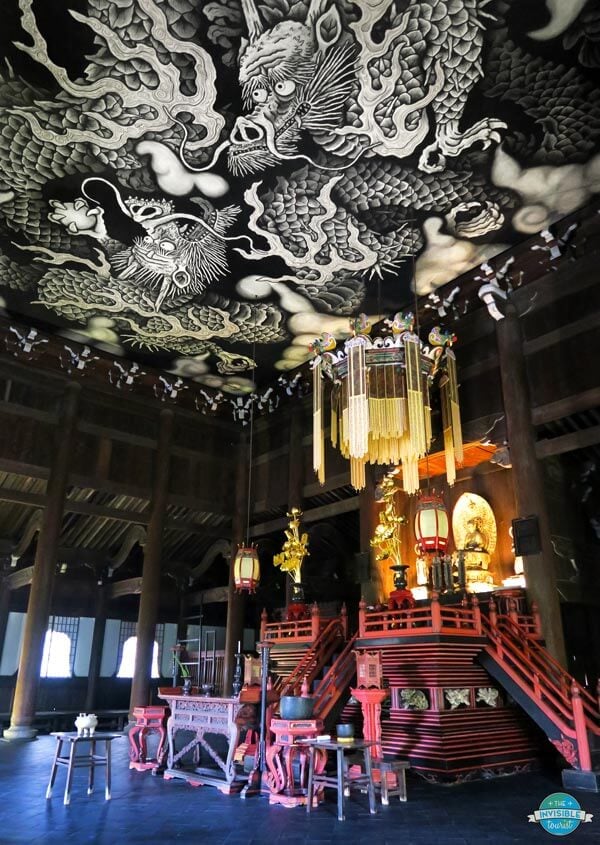
Kodai-ji
Hidden at the back of Kodai-ji’s complex is a little-known bamboo grove that is the perfect (and uncrowded) alternative to Arashiyama Bamboo Grove in the city’s north. It is famed for the “dragon’s back” undercover boardwalk stretching across a landscaped garden.
Dedicated to Hideyoshi, one of the great unifiers of Japan, Kodai-ji was built by his wife Nine (whom Ninenzaka street is named after), and the lovers are enshrined within a beautifully hand-painted building in the complex. Two of the oldest teahouses in the country can be found in the lush temple grounds.
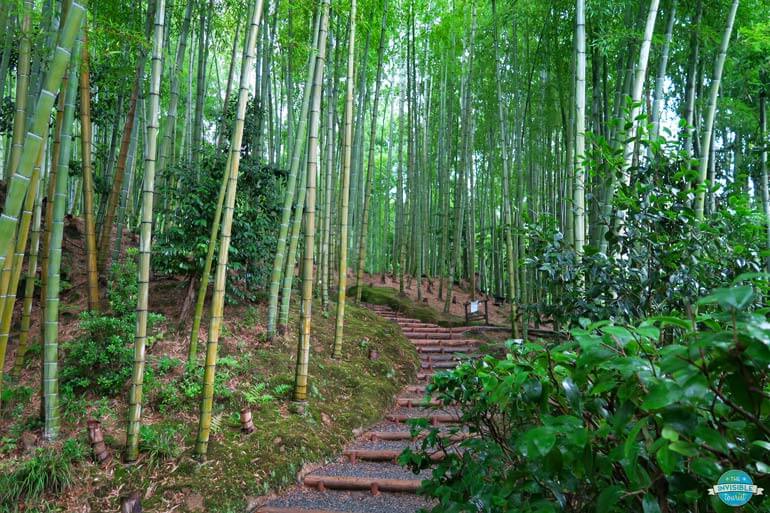
Nijo Castle
The highlight of one of my many visits to Kyoto, Nijo Castle (Nijo-jo) is a must-see if you’re interested in learning about the opulent surroundings Japan’s emperors once lived amongst.
With intricately painted sliding door panels, coffered ceilings, gold trimmings and painstakingly-carved wooden details, Nijo Castle is an absolutely spectacular UNESCO World Heritage site. I was blown away by its craftsmanship!
Have you heard of nightingale floors before? You’ll get to experience them at Nijo Castle. This centuries-old and unintentional building technique allowed castle residents to detect intruders, as the floorboards make a chirping sound when walked upon.
NOTE: Photos inside Nijo Castle are forbidden (unfortunately this includes non-flash photography), so the below image without my watermark are credited my partners at Klook, whom you can buy tickets in advance here or take a guided tour in English here.
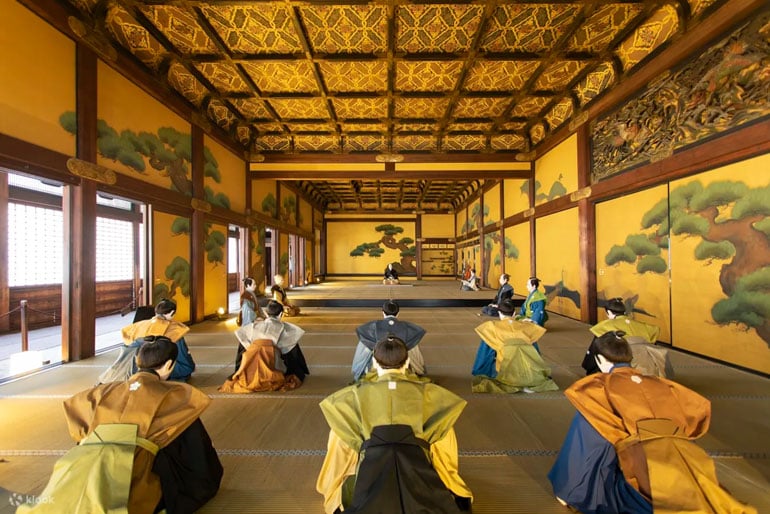
More things to do in Kyoto
I’d recommend selecting the sights that interest you and mark them out on a Google Map so you can combine nearby places in each neighbourhood during your stay.
TIP: The following list of things to do is quite lengthy, and I have omitted the Northern Kyoto neighbourhood and attractions as I personally believe there are beautiful less-crowded alternatives to Arashiyama Bamboo Forest and Kinkaku-ji elsewhere. My Kyoto itinerary includes the Northern Kyoto neighbourhood and 4 days worth of attractions if you’d like to read more.
Downtown Kyoto
- Kyoto Station – a maze of stores and eateries in itself!
- Kyoto Tower – Located on the northern exit of Kyoto Station, this red-and-white tower dating back to the 1930’s is known to represent either a candle or lighthouse, depending on whom you speak to.
- Sanjo Ohashi Bridge – Dating back to 1590, said to have begun the road that linked Kyoto and Edo (now Tokyo) in its time.
- Nishiki Market – Undercover outdoor arcade selling fresh seafood, fresh foods and produce.
- Nishiki Tenman-gū – Lantern-adorned shrine located within Nishiki Market.
- Sanjo-Kai Shotengai – Over 7 kilometres of undercover outdoor shopping arcades – perfect for picking up traditional Japanese souvenirs!
- Yasaka Shrine – Located at the end of busy Shijo-dori street, it’s beautiful and less crowded to explore at dusk and also head into lovely adjacent Maryuama Park.
- Pontocho – West of the Kamogawa River, these narrow laneways full of izakaya are where you may catch glimpses of working geisha in the evenings.

Central Kyoto
- Kiyomuzu-dera – Another of Kyoto’s “Big 4,” this “Water Temple” is the most beloved by locals and visitors alike. Its wooden stage is a must-see, and is stunning in every season.
- Jishu-jinja – Tucked away within Kiyomizu-dera, this small shrine is known for its Fortune Stones of Love and is dedicated to the god of love and relationships.
- Yasaka Koshin-do – Small temple hidden away behind Kiyomizu-dera. Nicknamed the “pom pom temple” due to the colourful balls left by worshippers as wished (They actually represent monkeys with bound hands and feet).
- Shirakawaminami-dori – Titled as one of the most “Beautiful Streets in Asia,” you’ll see maiko (geisha in training) and geiko (local dialect for geisha) running their errands and heading to meetings around here in the evenings.
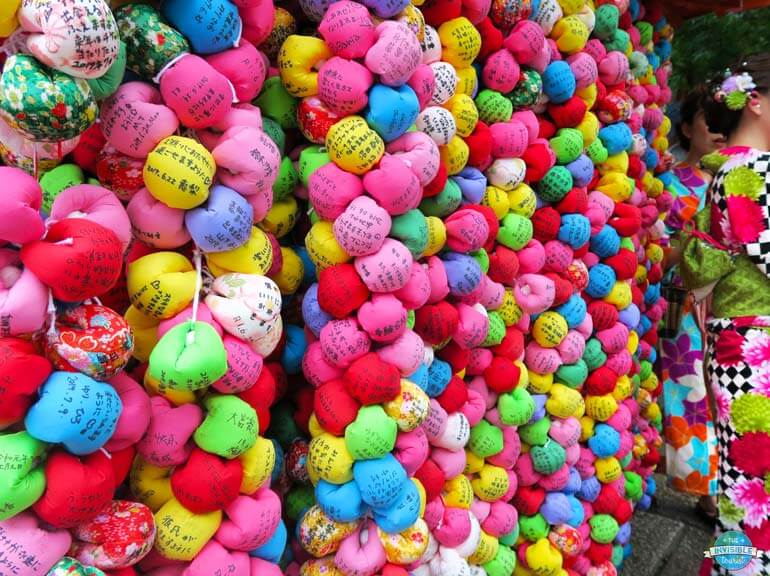
Eastern Kyoto
- Fushimi Inari Taisha – The final of my “Big 4” attractions, this shrine covers an entire mountainside and can take a few hours to climb to the top. Expect a lot of crowds at the entrance, but the further in you go, the fewer tourists there are. During the evening there are little visitors and a different vibe. You can skip the crowds on a Fushimi hidden hiking trail tour, read my review of this Fushimi Inari Shrine hike for details.
- Daigo-ji – Picturesque to visit during autumn when the grounds’ maple trees turn a fiery red, this temple and overlooking a pond is a lovely escape from tourist crowds any other time of year.
- Tofuku-ji – Founded in 1236, this temple is known for its multiple Japanese landscaped gardens, and valley of red foliage visible from a nearby bridge during the autumn months.
- Okazaki Shrine – Dedicated to rabbits, the shrine is dotted with adorable little amulets left by worshippers and is lesser-known amongst foreign visitors.
- Nanzen-ji – Features a working Roman-style aqueduct, in which you can walk across a pathway along the tops for glimpses over Kyoto.
- Ginkaku-ji – Known as the Silver Pavilion for its colour when a full moon reflects into the adjoining pond, this temple was inspired by the style of its gold sibling, Kinkaku-ji. However Ginkaku-ji’s gardens and stunning elevated views over Kyoto are far more impressive.
- Philosopher’s Path – Creating a cherry blossom tunnel during spring, this old stone pathway runs north-south from the Higashiyama area near Gion to Ginkaku-ji along a canal.
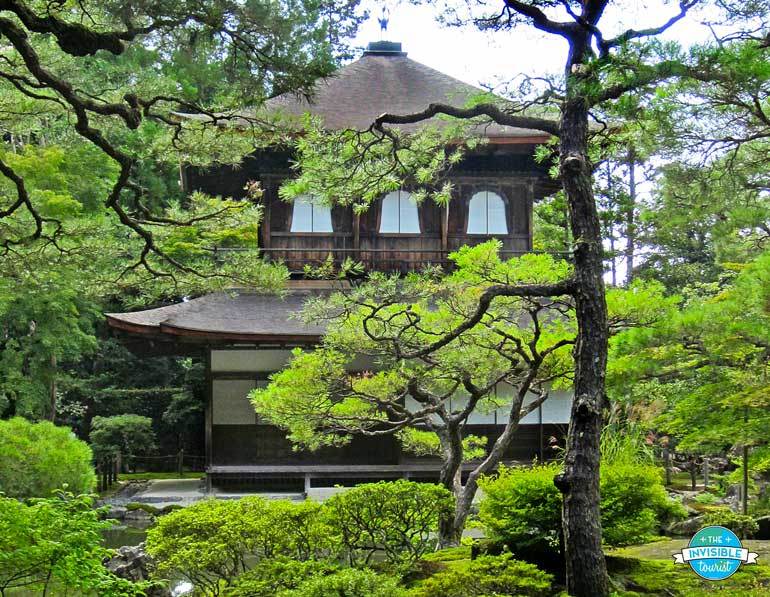
DAY 10: NARA
Home to 8 UNESCO World Heritage sites, Nara was the country’s capital city before Kyoto, making it one of the best places to experience ancient Japan.
With free-roaming deer believed to be messengers to the gods in ancient times, Nara’s intriguing flat streets bursting with history intertwined with stunning natural scenery will leave you in awe.
How to get from Kyoto to Nara
The fastest way to get to Nara from Kyoto is by Kintestu Rail. The journey takes about 30 minutes, is not covered by the JR Pass but is covered by the Kintetsu Rail Pass. This will take you Kintetsu-Nara Station, which is closer to Nara Deer Park (JR Nara Station is in the city’s west instead).
Things to do in Nara
My Nara day trip itinerary covers each of these locations in further detail:
- Nara Deer Park – Make friends with the sacred deer by purchasing senbei (deer crackers – human food can make them sick). They’ll poke at your pockets and hands if you make them wait too long!
- Kofuku-ji – UNESCO World Heritage site dating back to 730 AD, was once known as the 7 Great Temples of Nara. Its Treasure Hall houses significant cultural and religious artefacts.
- Sarusawa-ike Pond – Reflects Kofuki-ji’s wooden pagoda. Legend says a court lady drowned here when she fell out of favour with the emperor in ancient times.
- Yoshiki-en Gardens – stunning moss gardens, stone pathways, free for foreign passport holders.
- Ukimido Gazebo – Pass by this picturesque pond and floating wooden gazebo to escape tourist crowds that scream at approaching deer. Directly opposite here is a hidden bamboo grove at Yugayama Enchi Old House Garden.
- Nandaimon Gate – Dating back to the 13th century, this wooden gate is protected by two huge carvings of fierce Nio Guardians. Don’t forget to walk by the left side to see something interesting most visitors miss!
- Todai-ji Daibutsu-den – Once the tallest wooden building in the world until recent years, this UNESCO World Heritage site houses one of Japan’s 3 Great Buddhas. Cast in copper and bronze, the statue is 15 metres tall.
- Todai-ji Shoro – Old bell dating back to 1210, the same time as Todai-ji’s founding.
- Todai-ji Nigatsu-do – Elevated temple with a large wooden balcony overlooking the city of Nara. Perfect in the late afternoon to watch the sun set!
- Kasuga-Taisha Shrine – Absolutely stunning UNESCO World Heritage site with thousands of traditional gold and bronze lanterns donated by worshippers over the centuries. Its pathways of countless stone lanterns create a romantic atmosphere in the evening.
- Naramachi – Quaint preserved streets of traditional stores, eateries, and a quirky little museum on the history of Nara.
- Mt Wakakusa Fire Festival – If visiting in late January, this centuries-old festival is celebrated by lighting the mountainside on fire against a backdrop of fireworks.
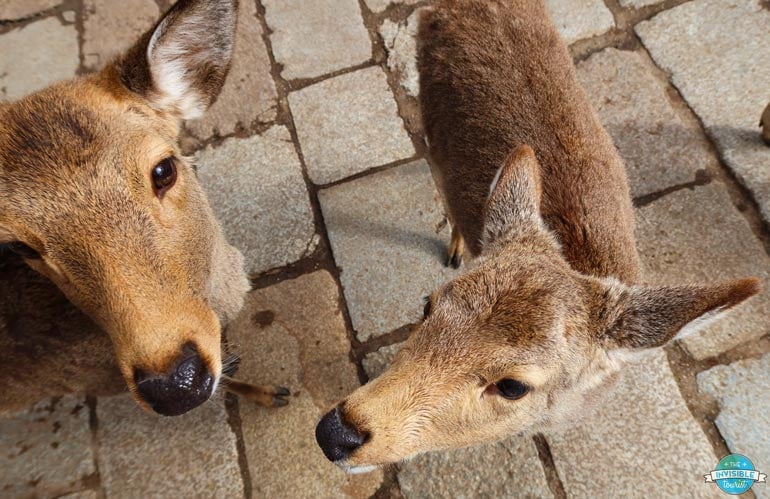

Day 11-12: FUJINOMIYA
My favourite and most underrated location for a Japanese honeymoon to experience the beauty of evasive Mt Fuji, Fujinomiya is not on the mainstream tourist radar, despite the bullet train going right past it.
This lovely town is the closest to Mt Fuji and was once used as the ancient starting point for pilgrims wishing to climb it from its western side when Kyoto was Japan’s capital.
How to get from Kyoto to Fujinomiya
The journey from Kyoto Station to JR Fujinomiya Station takes around 2.5 hours with a good connection. This journey is covered by the JR Pass if using the Kodama こだま shinkansen. You’ll need to switch from the shinkansen line to the local JR line at Shizuoka Station, and take the train to Fujinomiya (about 40mins). Cost: 11,730 yen without the JR Pass.
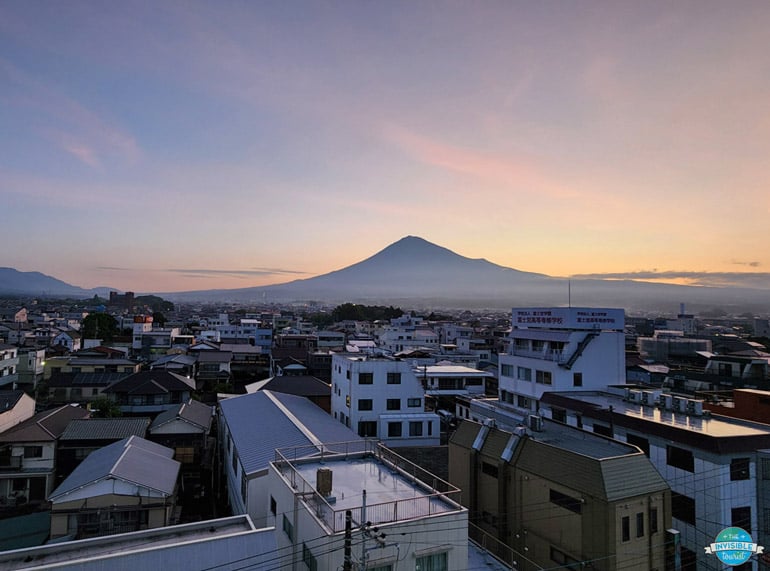
Things to do in Fujinomiya
Summer is the worst time to see Mt Fuji, due to high humidity creating a constant cloudy blanket. But during my 2 night stay I learnt the weather can be so different each day, and the best time to see her is early morning.
Trust me when I say it’s absolutely worth setting your alarm early to experience views like this from your room, and to go for a romantic early morning walk as the sun rises over the town!
Here are some ideas for how to spend your time, for the full details read my guide to things to do in Fujinomiya:
- Mt Fuji sunrise: This was honestly one of the highlights of all my trips to Japan. Don’t miss it!
- Food & sightseeing tour: So much fun! Try local handcrafted sweets and yakisoba, visit a sake brewery that uses water from Mt Fuji, learn the importance of Fujisan Hongū Sengen Taisha, visit the Mt Fuji World Heritage Centre and more.
TIP: Book your customised Fujinomiya food tour here.
- Enjoy Mt Fuji views: Stroll along the Urui River beneath beautiful cherry blossom trees with Mt Fuji views during spring
- Sightseeing bus tour: Hop on a sightseeing bus out of the city to experience nature’s wonders and Mt Fuji culture. See Shiraito no Taki Waterfall; Lake Tanuki (known for “Diamond Fuji”); learn about Mt Fuji’s ancient religious origins at Hitoana Fuji-ko Iseki; Enjoy ice cream from the happiest cows at Milk Land.
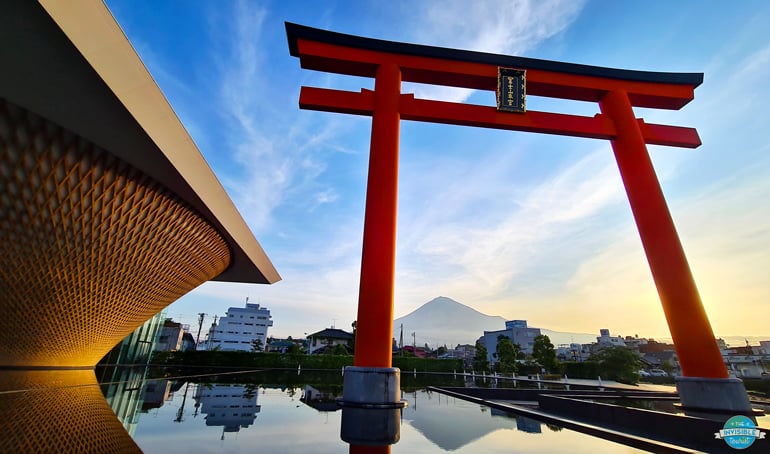

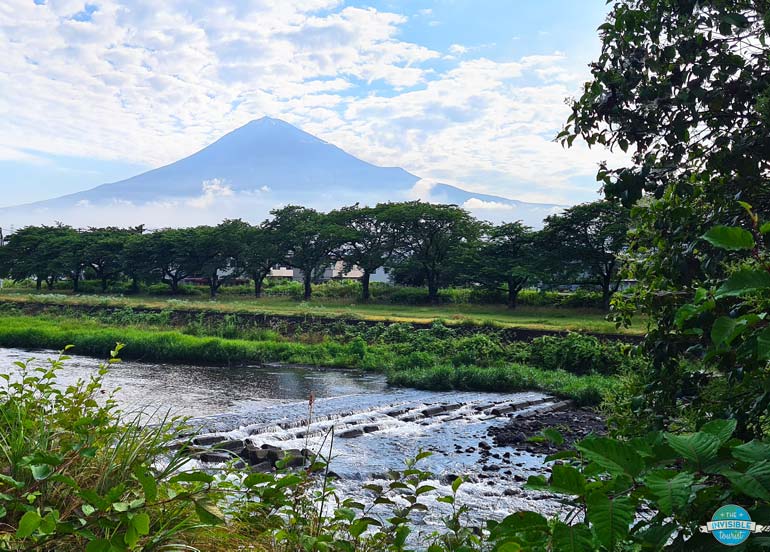
DAYS 13-14: TOKYO
Head back from Fujinomiya to Tokyo today before your flight home. I’ll leave it up to you to decide how to spend your final day in Tokyo, as this is a good chance to explore some neighbourhoods you didn’t visit during your first few days in Japan!
How to get from Fujinomiya to Tokyo
The journey will take 2 – 2.5 hours with good connections and is covered by the JR Pass. Take the local JR Minobu line to Shin-Fuji Station, then switch to the shinkansen to take you to Tokyo Station at high speed. Cost: 6,000 yen without the JR Pass.
Remember if time allows, you can always add an extra day or two to each destination in this itinerary to explore further.
Concluding this itinerary for a romantic honeymoon in Japan
This concludes my itinerary for a honeymoon to Japan! From exploring popular destinations to lesser-known ones not yet on the mainstream tourist radar, I hope this itinerary for a romantic honeymoon in Japan has given you plenty of ideas to get started.
As you can see, you don’t need to search for an all-inclusive Japan honeymoon package when it can be simple to plan yourself! Knowing the cultural do’s and don’ts in Japan as well as some basic Japanese for tourists with my free cheat sheet will go such a long way and will help you better blend in.
I deliberately didn’t include Osaka as one of the Japan honeymoon ideas as I personally feel like it’s a destination that you could skip on your first visit. However, if you’re hoping to visit Universal Studios Japan, my detailed Osaka itinerary has plenty of options for lesser-known spots, where to stay and tips for visiting this city.
While you’re here, find out what you’re forgetting to pack with my Japan packing list, my favourite Japan travel guide books, learn traditional and popular Japanese snacks, and if you have any questions at all, feel free to leave them in the comments below.
If you found this helpful please share it with your friends. Feeling social? Join my free Japan Off the Beaten Path Facebook Group, or follow along on Facebook, YouTube, Pinterest, Instagram and TikTok for more Japan inspiration!
Until next time,

Like it? Pin it! 📌
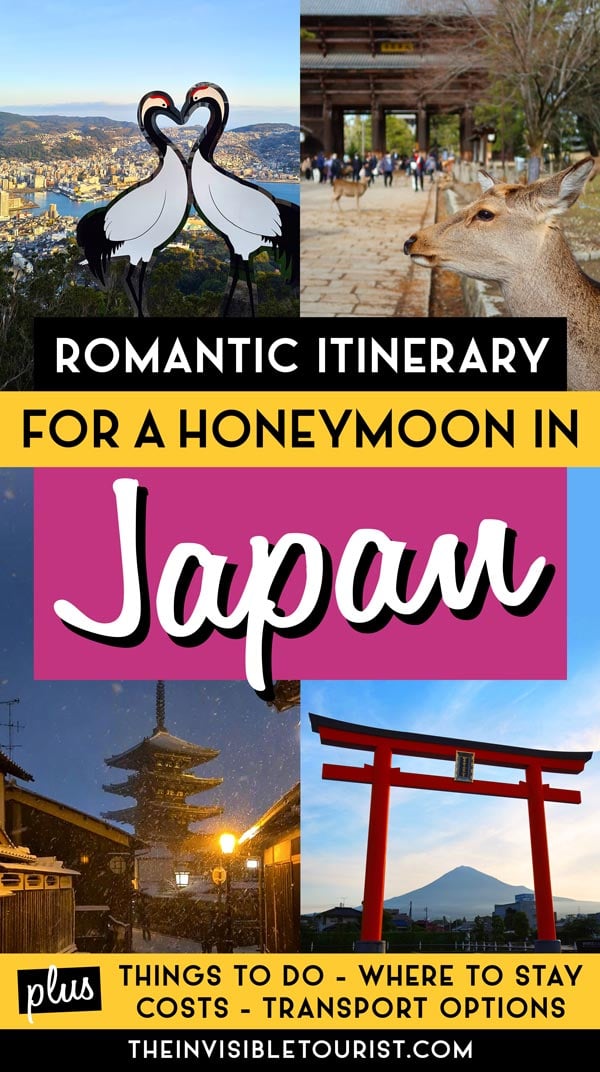
This guide to a Japan honeymoon itinerary contains some affiliate links, at no extra cost to you. I may earn a small commission if you decide to make a purchase and if you do, thanks for your support! This helps with the costs of running my blog so I can keep my content free for you. As always, I only recommend a product or service that I genuinely love and use myself!

This is so great and in detail! I am planning my honeymoon for this autumn and we will be day hopping for a week from Tokyo to Kyoto. Because of your blog I put Fujinomiya on the list of travel! I have booked the same hotel you stayed at for two days, however without the Mt Fuji views. Do you have any other recommendations on where to go afterwards that is on the way to Kyoto?
Hi Leanne, congratulations on your upcoming honeymoon! That’s so exciting 😃
I’m so glad to hear you’ve included Fujinomiya on your honeymoon itinerary for Japan! It’s one of the most incredible spots to see Fujisan, in my opinion.
The other place I can recommend in between Tokyo and Kyoto is the Izu Peninsula – but if you’re coming from Tokyo you’d likely head there first as it’s before Fujinomiya on the train line.
I have a huge Izu Peninsula itinerary here if you’d like some ideas.
Otherwise, on the way to Kyoto from Fujinomiya you could stop by Suruga (I haven’t been but only heard good things about it).
This is a place not to miss if you enjoy tea – there are stunning tea fields at the base of Mt Fuji. Try matcha calligraphy, meet local artisans, visit shrines and more.
There is a day tour or overnight in Suruga itinerary here if you’re interested 😊
I hope that helps and you have an amazing honeymoon in Japan!
Thank you for this in-depth guide, Alyse! Would you recommend doing this same itinerary in the winter if I’m planning my honeymoon in mid-December? Or are there any other recommendations you have for a winter visit?
Hi Leslie, congratulations on planing your honeymoon! That is so exciting 😃
Yes, I actually visited Kyoto, Nagasaki, Huis Ten Boch and Arita during the winter (the only time to see the winter illuminations at Huis ten Bosch) and absolutely recommend it. Winter is perfect for catching a glimpse of Mt Fuji without her cloudy blanket, as the cool air means the skies are clearer.
Just note like last year, the warmer weather has lingered this year so chances are you likely won’t see snow in these cities in mid-December. But Fujisan will be wearing her snow cap!
If you did want to see snow, you would need to head further north to the Tohoku or Hokkaido regions.
I hope that helps and you have an unforgettable honeymoon in Japan!
Wow, I didn’t know Nagasaki was so pretty! I also had never heard of Fujinomiya before. I think I will need to add a stop to each for my honeymoon trip to Japan this summer. Would you have any suggestions for more places to visit around the Nagasaki area?
Thanks for this great blog!
Congrats on your honeymoon and for your kind words, Sarah!
I do definitely recommend Huis Ten Bosch north of the city and Arita if you’re on the hunt for some porcelain (some nice weddings gifts for yourself and your new partner! Can be high quality or cheap and cheerful little finds). These will be featured in my upcoming Nagasaki itinerary.
I can also suggest Imari for more porcelain history, Arita Porcelain Park (best reached if you’re planning to hire a car), Izumiyama Quarry and even Okawachiyama Village – known as “Village of the Secret Kilns” during the Edo Period and is one of the most isolated villages in Japan. I hope that helps and you have an amazing time on your honeymoon!